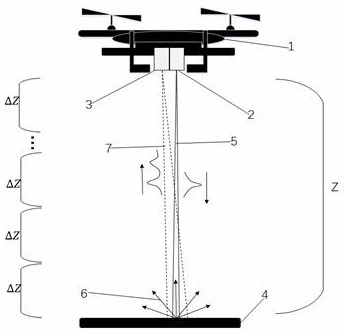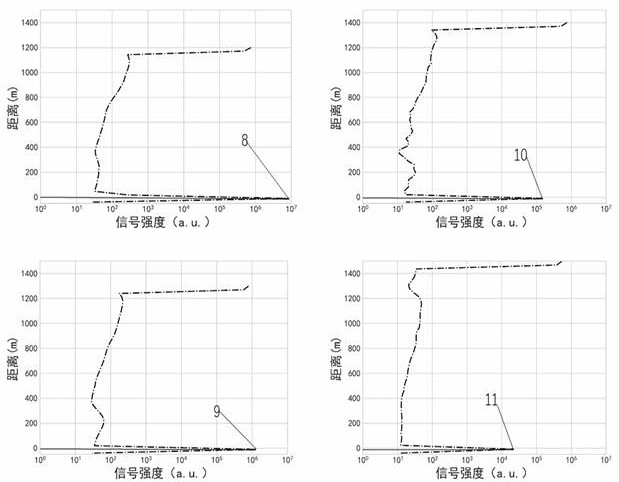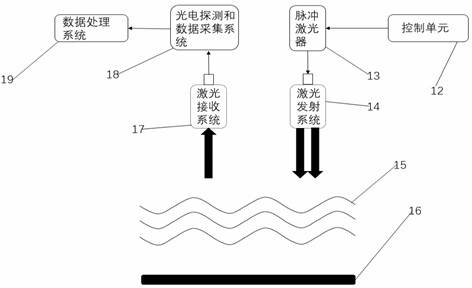An inversion method of aerosol extinction coefficient based on UAV atmospheric lidar
A technology of laser radar and extinction coefficient, which is applied in radio wave measurement system, climate sustainability, re-radiation of electromagnetic waves, etc., can solve problems such as inaccurate parameter values and inversion errors
- Summary
- Abstract
- Description
- Claims
- Application Information
AI Technical Summary
Problems solved by technology
Method used
Image
Examples
Embodiment Construction
[0012] The purpose of the present invention is to provide an aerosol extinction coefficient inversion method based on UAV atmospheric lidar, so as to solve the technical problems in the related fields.
[0013] The detection principle of the aerosol extinction coefficient inversion method based on the UAV atmospheric laser radar of the present invention figure 1 shown. The atmospheric lidar transmitting unit (2) includes: a control unit, a pulsed laser and a laser transmitting system, and the atmospheric lidar receiving unit (3) includes: a laser receiving system, a photoelectric detection and data acquisition system, and a data processing system. is the sum of the rising heights of n segments, the atmospheric lidar is mounted on the UAV (1), and the diffuse reflector (4) is placed at the ground target position. After the UAV (1) lifts up to a fixed height, the atmospheric lidar transmits the unit (2) Aim downward at the diffuse reflector (4) at the target position; using the...
PUM
 Login to View More
Login to View More Abstract
Description
Claims
Application Information
 Login to View More
Login to View More - R&D
- Intellectual Property
- Life Sciences
- Materials
- Tech Scout
- Unparalleled Data Quality
- Higher Quality Content
- 60% Fewer Hallucinations
Browse by: Latest US Patents, China's latest patents, Technical Efficacy Thesaurus, Application Domain, Technology Topic, Popular Technical Reports.
© 2025 PatSnap. All rights reserved.Legal|Privacy policy|Modern Slavery Act Transparency Statement|Sitemap|About US| Contact US: help@patsnap.com



